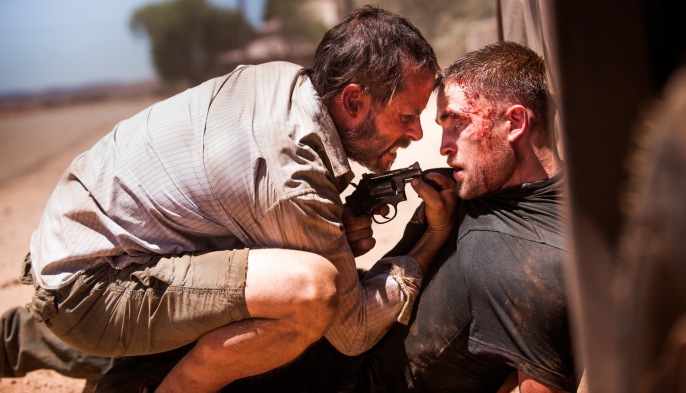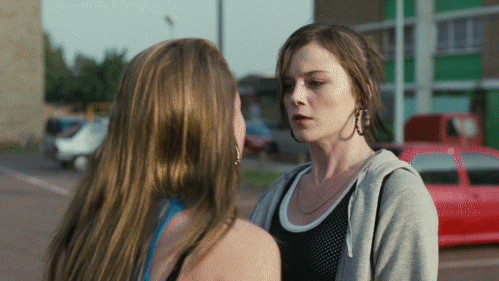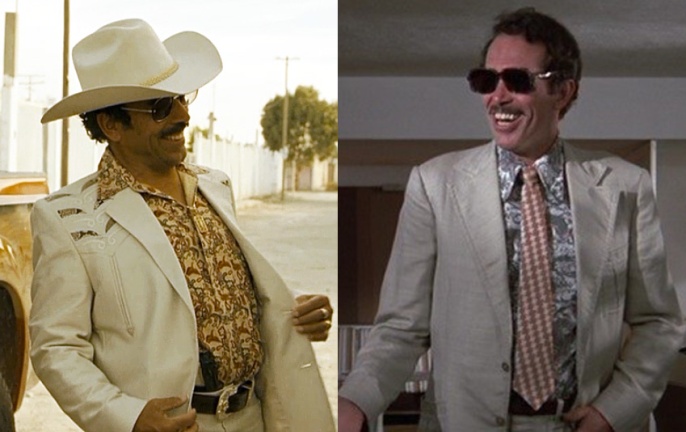If I had to pick my top contributors to the Western movie genre, the name John would not be among them. I would forego Wayne, Ford and Huston for the likes of Sam (Peckinpah), Sergio (Leone), Larry (McMurtry) and Cormac (McCarthy). Now I know that the work of these later auteurs stands on the shoulders of classic Westerns of the ‘40s and ‘50s. Films like The Treasure of Sierra Madre and The Searchers at one time defined the face of American pop culture.
But in the same way that it’s a ridiculously antiquated, sentimentalist notion to call Citizen Kane the greatest movie ever made, it should be acknowledged that Western filmmaking and its underlying ideologies have changed and, lord forbid, evolved since the era of neckerchief-clad, lassoo-twirling dandies roundin’ up Injuns.
More to the point: I like my Westerns weird, bleak and bloody. I love the heightened style and sparse dialogue that Leone and Eastwood pioneered. And while The Wild Bunch isn’t my favorite Peckinpah movie, it introduced concepts to the genre that had been missing—namely blood, the vulgarity of humans killing humans, and an outlaw’s sense of humor about these things.

Sam Peckinpah had his head in the right place (pictured with Isela Vega on the set of 1974’s Bring Me the Head of Alfredo Garcia).
But one thing hasn’t changed. From Ford to Leone and Peckinpah to modern classics like No Country for Old Men, Hollywood—and the world at large—seems as smitten with the genre as it was back in the days of Hopalong Cassidy.
The past few decades have seen some sterling additions, including Tommy Lee Jones’ The Three Burials of Melquiades Estrada (2005), Andrew Dominik’s The Assassination of Jesse James by the Coward Robert Ford (2007, what an asshole of a title) and John Hillcoat’s The Proposition (2005).
Those last two films come from a Kiwi and an Aussie director, respectively. I mention this because the genre has become so widespread that the lore of the American West has perhaps been best expressed over the past decade via foreign manifestations.
Which brings us to Germany, where in the 1960s, a Western film movement based on Karl May’s Winnetou books brought cowboys and Indians to the Krauts. But times have changed, and the German-Austrian film The Dark Valley is to Winnetou what No Country was to those “John” classics.
It’s a Western that draws from several corners of the Earth to shape its familiar yet refreshingly stylized narrative. While the title of “Best German Western Ever” might not impress, I’ll further that by saying that Dark Valley is one of this millennium’s stronger additions to one of the most beloved and badass genres of all-time.
The first time I watched The Dark Valley, I couldn’t stop thinking about Clint Eastwood’s High Plains Drifter (1973). Like Drifter, Valley introduces us to an ominous and silent figure who enters a small town on horseback. In both films, it’s hinted at early on that our mysterious protagonist has arrived to avenge horrific sins of the past. And in both films, it is a dark, torturous secret in the town’s history that is the calling card for bloody retribution.
But High Plains Drifter isn’t the only film that seems to have heavily influenced director Andreas Prochaska’s suspense tale set in the 19th Century Austrian Alps. There’s an undercurrent of fear and unease among the townsfolk perpetrated by some dark secret that’s reminiscent of what was going on in M. Night Shyamalan’s The Village.
And then there’s the snowy, ramshackle lumber town itself—and one particular climactic scene involving this setting—that brings to mind Robert Altman’s McCabe and Mrs. Miller (a film that’s in or near my all-time top ten). Finally, there’s some wonderfully stylistic audiovisual sequences that evoke that eerie theme from Ravenous, the score from There Will Be Blood, or really just about any moment in Nicolas Winding-Refn’s Drive.
So there’s your laundry list of comparisons. I mention them mainly because The Dark Valley is a film of patchwork style and influence. This eclectic range extends to its superb lead, Sam Riley—the lone British actor cast in a German film with German dialogue (Important note: Netflix defaults to a dubbed version for U.S. audiences—switch to German with English subtitles).
Which raises the question, Where the fuck has Sam Riley been? He broke through with his incredible depiction of Joy Division frontman Ian Curtis in Anton Corbijn’s Control (2007)—a film I’d put alongside Ida (also on Netflix Instant) as having the most stunning black-and-white cinematography of the 21st Century. Since, he’s had forgettable roles in big-budget flicks (Maleficent) and a few big roles in forgettable indie flicks (On the Road, Brighton Rock).
Anyway, old Sam returns to form in The Dark Valley as Greider, a Yank who’s travelled to an isolated Austrian mountain town under the guise of an Ansel Adams-inspired photographic mission.
The town is run by Old Brenner, an iron-fisted tyrant who, along with his six sons, upholds a decades-old tradition of shame that keeps the villagers in perpetual fear. Tensions begin to mount as a girl whose family Greider is staying with finds herself in line for the sadistic ritual.
Like Riley’s performance, The Dark Valley builds with a slow burn that might detract viewers looking for a 3:10 to Yuma-style shoot ’em up. Valley is an atmospheric Western. Part of that means Sam Riley spending quite a bit of time brooding while he looks at himself in a mirror, backdropped by eerie noise music. It also means plenty of gorgeous camera work around the sublime snow-covered valley where the film is set.
When the chips begin to fall, however, the film is as suspenseful and stylistically glorious as any of the recent Western triumphs I’ve mentioned. In particular, the brilliant cinematography mixed with Riley’s escalating emotional range bring us to one of the most phenomenal climactic shootout scenes the genre has seen in the past few decades. Director Prochaska embellishes all of this with a murderous montage set to the tune of a song by indie band Steaming Satellites (although I’m sure some purists may hate this scene for its hyperreal blending of new and old).
Due to its initially tedious pace and rather conventional narrative, The Dark Valley isn’t exactly on the same level as modern classics like The Three Burials, The Proposition and No Country. Still, when pitted against the slew of simply above-average Western flicks of the past few years that Netflix Instant has to offer (Sweetwater and Blackthorn come to mind), Valley is a damn fine piece of filmmaking, aided particularly by Prochaska’s style, Thomas Kienast’s cinematography and Riley’s controlled performance.
GRADE: B+
IMDb: 7.2
-Sam Adams












































































































